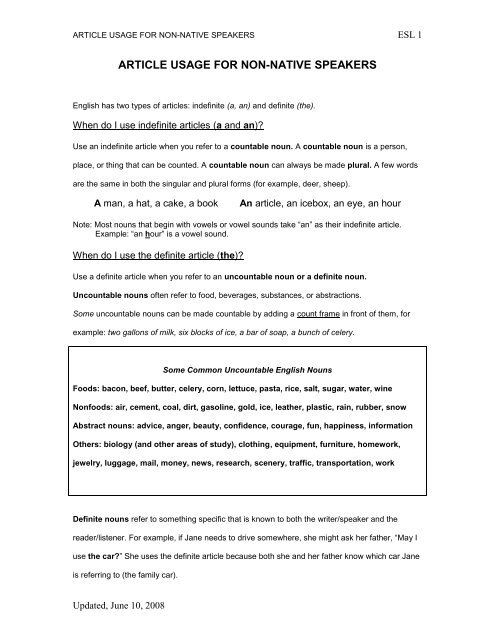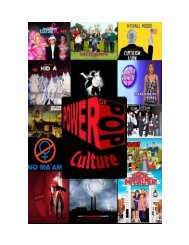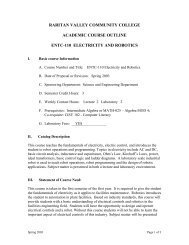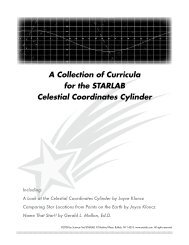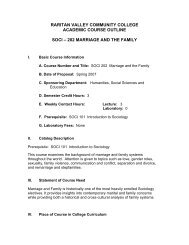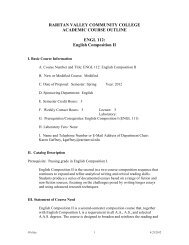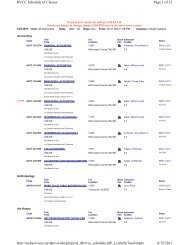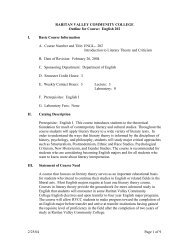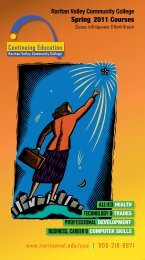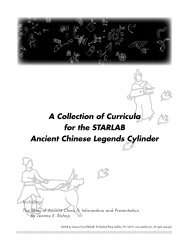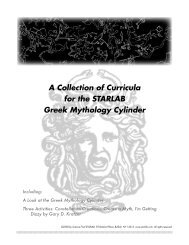ARTICLE USAGE FOR NON-NATIVE SPEAKERS
ARTICLE USAGE FOR NON-NATIVE SPEAKERS
ARTICLE USAGE FOR NON-NATIVE SPEAKERS
Create successful ePaper yourself
Turn your PDF publications into a flip-book with our unique Google optimized e-Paper software.
<strong>ARTICLE</strong> <strong>USAGE</strong> <strong>FOR</strong> <strong>NON</strong>-<strong>NATIVE</strong> <strong>SPEAKERS</strong> ESL 1<strong>ARTICLE</strong> <strong>USAGE</strong> <strong>FOR</strong> <strong>NON</strong>-<strong>NATIVE</strong> <strong>SPEAKERS</strong>English has two types of articles: indefinite (a, an) and definite (the).When do I use indefinite articles (a and an)?Use an indefinite article when you refer to a countable noun. A countable noun is a person,place, or thing that can be counted. A countable noun can always be made plural. A few wordsare the same in both the singular and plural forms (for example, deer, sheep).A man, a hat, a cake, a bookAn article, an icebox, an eye, an hourNote: Most nouns that begin with vowels or vowel sounds take “an” as their indefinite article.Example: “an hour” is a vowel sound.When do I use the definite article (the)?Use a definite article when you refer to an uncountable noun or a definite noun.Uncountable nouns often refer to food, beverages, substances, or abstractions.Some uncountable nouns can be made countable by adding a count frame in front of them, forexample: two gallons of milk, six blocks of ice, a bar of soap, a bunch of celery.Some Common Uncountable English NounsFoods: bacon, beef, butter, celery, corn, lettuce, pasta, rice, salt, sugar, water, wineNonfoods: air, cement, coal, dirt, gasoline, gold, ice, leather, plastic, rain, rubber, snowAbstract nouns: advice, anger, beauty, confidence, courage, fun, happiness, informationOthers: biology (and other areas of study), clothing, equipment, furniture, homework,jewelry, luggage, mail, money, news, research, scenery, traffic, transportation, workDefinite nouns refer to something specific that is known to both the writer/speaker and thereader/listener. For example, if Jane needs to drive somewhere, she might ask her father, “May Iuse the car?” She uses the definite article because both she and her father know which car Janeis referring to (the family car).Updated, June 10, 2008
<strong>ARTICLE</strong> <strong>USAGE</strong> <strong>FOR</strong> <strong>NON</strong>-<strong>NATIVE</strong> <strong>SPEAKERS</strong> ESL 2How can I identify definite nouns?There are four ways to determine whether the noun you use is definite:1. You mention it previously in your writing.“I saw a funny-looking dog yesterday. It looked like a cross between a poodleand a German Sheppard. When it saw my cat, the dog ran away.”Your reader will know which dog you are referring to because you mentioned it in yourfirst sentence.2. A ranking adjective makes the noun’s identity specific.“The tallest girl in my class is 6’2” tall.”There can only be one tallest girl in the class.3. The noun describes a unique person, placer or thing.“The earth revolves around the sun once every 365 days.”There is only one earth and one sun!4. A modifying word, phrase, or clause follows the noun and makes it clear whichspecific person or thing you are referring to.“The girl who I am dating likes to go to the movies.”Singular Noun vs. Plural Noun: Which article do I use?Remember: every singular noun must have an article in front of it!If the noun is singular and definite, use “the.”“The painting in the living room was given to me by an old friend.”If the noun is singular and not definite, use “a” or “an.”“My lunch consisted of a sandwich, a cookie, and a can of soda.”If the noun is plural or uncountable and definite, use “the.”“The grade reports I gave you are top secret.”“The wool in my sweater is from Scotland.”If the noun is plural or uncountable and not definite, do not use an article.“Long reports are difficult to write.”“I like to wear blue pants.Updated, June 10, 2008
<strong>ARTICLE</strong> <strong>USAGE</strong> <strong>FOR</strong> <strong>NON</strong>-<strong>NATIVE</strong> <strong>SPEAKERS</strong> ESL 3General vs. Specific: Which article do I use?A, an, and the can all be used for a noun that refers to the whole class to which individualcountable nouns belong. This use of articles is called generic.Indefinite a and an: any one member of a class or category.Generic a and an: all members of a class or category.“A tiger is a dangerous animal.” (Any individual tiger)“The tiger is a dangerous animal.” (All tigers: tiger as a generic category)The omission of articles also expresses a generic (or general) meaning:No articles with a plural noun: “Tigers are dangerous animals.” (all tigers)No articles with an uncountable noun: “Anger is a destructive emotion.” (any kind ofanger)QUICK REFERENCECountable noun: A noun that can be counted and be made plural.Uncountable noun: A noun that cannot be counted unless you add acounting frame. Uncountable nouns are often abstractions and ideas.Definite noun: A noun that is specific, unique, and known to bothreader and writer.Use a or an: When the noun is countable AND singular.Use the: When the noun is uncountable or plural AND definite.Do not use an article when the noun is plural or uncountable and NOTdefinite.Updated, June 10, 2008


